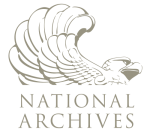(Explore the history and landscape of the United States with us as we approach the 250th anniversary of American Independence. Get out your atlas and almanac and follow along!)
New Mexico is our homeschool state-of-the-week, so why not spend a few minutes today with your students learning about one of New Mexico’s most important historical places: Aztec Ruins National Monument, which preserves the archeological remains of a centuries-old early Pueblo community.
![[Homeschool American Heritage]](https://upload.wikimedia.org/wikipedia/commons/thumb/7/7a/Aztec_Ruins_National_Monument_by_RO.JPG/1024px-Aztec_Ruins_National_Monument_by_RO.JPG)
“Early settlers mistakenly thought that people from the Aztec Empire in Mexico created these striking buildings. They named the site “Aztec,” a misnomer that persisted even after it became clear that the builders were the ancestors of many Southwestern tribes.”
Aztec Ruins, built and used over a 200-year period, is the largest Ancestral Pueblo community in the Animas River valley. Concentrated on and below a terrace overlooking the Animas River, the people at Aztec built several multi-story buildings called “great houses” and many smaller structures. Associated with each great house was a “great kiva” — a large circular chamber used for ceremonies. Nearby are three unusual “tri-wall” structures — above ground kivas encircled by three concentric walls. In addition, they modified the landscape with dozens of linear swales called “roads,” earthen berms, and platforms.
An interesting 700 yard trail leads visitors through the West Ruin, an excavated great house that had at least 400 interconnected rooms built around an open plaza. Its massive sandstone walls tower over 30 feet. Many rooms contain the original pine, spruce, and aspen beams hauled from distant mountains. Archeologists excavated and reconstructed the Great Kiva in the West Ruin plaza, and it now evokes a sense of the original sacred space.
The construction at Aztec shows a strong influence from Chaco Canyon, the site of a major Ancestral Pueblo community to the south. Aztec may have been an outlying community of Chaco, a sort of ancillary place connected to the center to distribute food and goods to the surrounding population. It may have also been a center in its own right as Chaco’s influence waned after 1100….
In about 1300 the Ancestral Pueblo people left the region, migrating southeast to join existing communities along the Rio Grande, south to the Zuni area, or west to join the Hopi villages in Arizona. (nps.gov)
You can find a wealth of additional information about the Monument’s history, landscape, location(s), and visitor facilities on the webpage for Aztec Ruins National Monument from the National Park Service, and also on the Monument’s page on Wikipedia.
![[Homeschool American Heritage]](https://upload.wikimedia.org/wikipedia/commons/thumb/e/ec/Aztec_Ruins_National_Monument%2C_New_Mexico%2C_US_%2812%29.jpg/1024px-Aztec_Ruins_National_Monument%2C_New_Mexico%2C_US_%2812%29.jpg)
Explore America’s National Parks, National Historical Parks, National Historic Sites, National Monuments, and more via Wikipedia and via the U.S. National Park Service’s website today.
What American treasures have you and your students been exploring in your homeschool this Hercules Term? 🇺🇸
❡ The great globe itself: This is one of our regular Homeschool Geography posts featuring important natural and historical sites in the United States. Print your own copy of our River Houses American Heritage Calendar and follow along with us, and add your name to our weekly mailing list to get great homeschool teaching ideas delivered right to your mailbox all through the year. 🌎
❡ We set to-day a votive stone: If you want a great long-term history and geography project for your homeschool, explore the Historical Marker Database online (hmdb.org) and make a plan to find all the markers that are listed in your local area. Add any new ones you know of that are missing, and add new photos or descriptions for the ones already included. Your students will gain a better appreciation for your local community and will learn a wealth of new information about history and geography. 🏛
❡ Print this little lesson: Down at the bottom of this post you’ll find a special “Print” button that will let you create a neat and easy-to-read copy of this little lesson, and it will even let you edit and delete sections you don’t want or need (such as individual images or footnotes). Give it a try today! 🖨
❡ Books in the running brooks: You can always turn to your River Houses atlas and almanac for more information about any of our homeschool states-of-the-week. The almanac has detailed profiles of all the U.S. states and territories, and the endpapers of the atlas are indexes that will show you where all of the individual national and regional maps may be found. 📚
❡ Homeschool calendars: We have a whole collection of free, printable, educational homeschool calendars and planners available on our main River Houses calendar page. They will help you create a light and easy structure for your homeschool year. Give them a try today! 🗓
❡ Support our work: If you enjoy our educational materials, please support us by starting your regular Amazon shopping from our very own homeschool teaching supplies page. When you click through from our page, any purchase you make earns us a small commission at no extra cost to you. Thank you for helping us to keep going and growing! 🛒
❡ Join us! The aim of the River Houses project is to create a network of friendly local homeschool support groups — local chapters that we call “Houses.” Our first at-large chapter, Headwaters House, is now forming and is open to homeschoolers everywhere. Find out how to become one of our founding members on the Headwaters House membership page. 🏡




